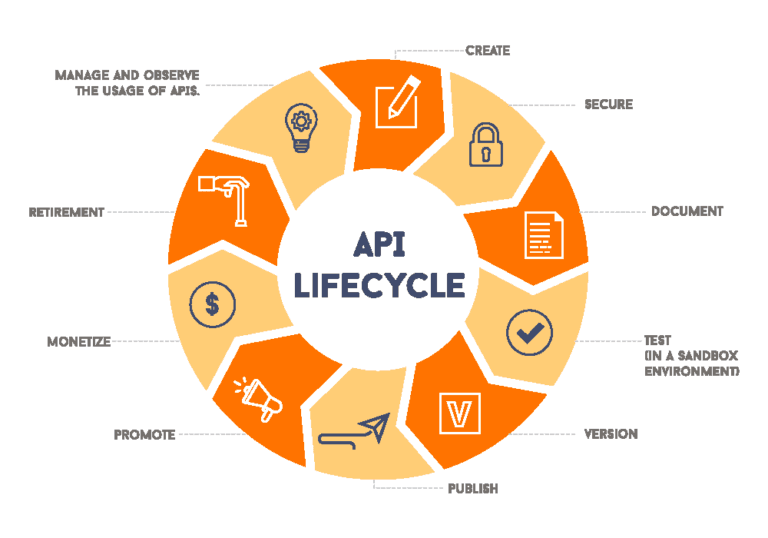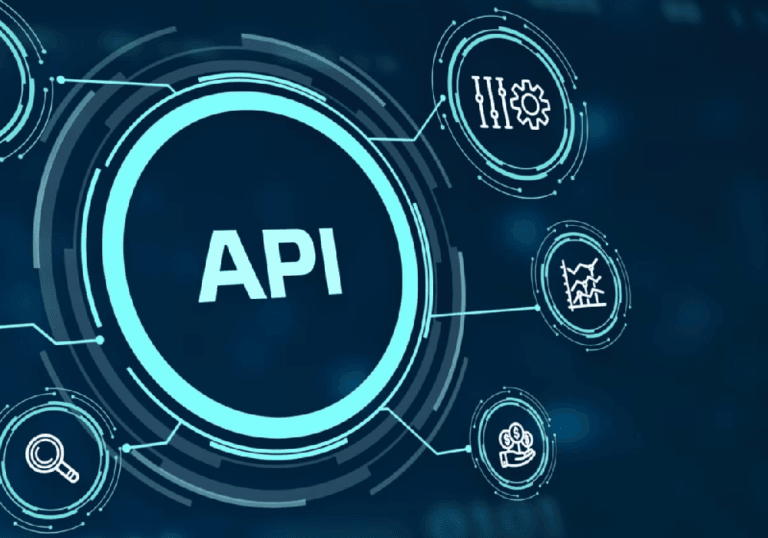A Comprehensive Guide to API Development Process
 Marketing IBTI#Marketing IBTI
Marketing IBTI#Marketing IBTIIf you work in the tech industry or are tech-savvy, then you must have come across the term “API Development Process.” Today, APIs play a bigger role in the economy than ever before, and they are everywhere in our daily lives. From booking tickets and logging on to Facebook to making payments via PayPal, APIs are essential components of modern software and applications.
Apart from their functional uses, there are also fun APIs that add an entertaining touch to our digital experiences. APIs like Fun Translations, which translate English to languages like Dothraki, Minion, and Klingon, or the Pokémon API, which provides all the Pokémon data in one place, bring joy and excitement to users.
Let’s dive deep into the realm of the API Development Process, discussing everything you need to know to build powerful and reliable APIs.
What is API?
API (Application Programming Interface) acts as a connection between different software applications, helping them interact and exchange data seamlessly. It comprises a set of programming codes and standards that define how information is transmitted and processed between applications.
APIs consist of two essential components:
- a technical specification outlining data exchange options
- and a software interface meeting these specifications.
By making function calls, one software application can access the information or functionality of another application. This enables developers to speed up software development, and add new features to existing solutions, and create innovative applications using third-party providers.
In essence, APIs empower software applications to work together harmoniously, enhancing their capabilities and enriching the overall user experience.
Types of APIs
Types of APIs can be categorized based on how they are released and made available for use:
Private APIs
These APIs are designed to improve services and solutions within an organization. They are accessible only to in-house developers and contractors working with the API publisher. Private APIs offer full control over API usage and are not available to the general public.
Partner APIs
Partner APIs facilitate software integration between two parties, typically business partners who have signed an agreement with the API publisher. These APIs are openly promoted and shared with authorized partners. Companies can benefit from additional revenue streams by granting partners access to data and capabilities while monitoring how their digital assets are utilized.
Public APIs
Also known as external or developer-facing APIs, these are available to third-party developers and the general public. Public APIs help increase brand awareness and can generate extra income if effectively implemented. They can be open, freely accessible without restrictive terms, or commercial, where users pay subscription fees or use APIs on a pay-as-you-go basis.
Composite API
Composite APIs combine multiple service and data APIs, allowing them to perform several tasks in a single call. By doing so, the execution speed improves, enhancing performance for the web interfaces and listeners.
API Development Life Cycle: A Step-by-Step Approach

The API Development Life Cycle is a systematic approach to building, deploying, and maintaining APIs in a step-by-step manner. This process ensures that APIs are developed with high quality, security, and scalability.
Let’s go through each step of the API Development Life Cycle in the following.
Identify API Requirements
- Begin by understanding the purpose of the API and the specific needs it should address.
- Gather requirements from stakeholders and end-users to define the scope and goals of the API.
- Identify the data to be exposed, the functionality to be provided, and the potential user base.
Design and Planning
- Create a detailed design blueprint for the API, outlining its endpoints, data structures, and communication protocols.
- Decide on the authentication and authorization mechanisms to ensure secure access to the API’s resources.
- Plan for versioning to handle future updates and changes without breaking existing client applications.
Select Technology Stack
- Choose the appropriate programming language and framework that aligns with the API’s requirements and organizational expertise.
- Consider factors like performance, scalability, and ease of maintenance when selecting the technology stack.
Development
- Implement the API’s functionality based on the design specifications and best coding practices.
- Create well-defined and intuitive endpoint URLs and HTTP methods (GET, POST, PUT, DELETE) for smooth interactions.
- Handle data validation, error handling, and proper responses to ensure robustness and user-friendly experience.
Below are some of the most important HTTP status codes and their meanings.
- 200 OK: The request was successful, and the server sent back the data the client asked for.
- 201 Created: The request was successful, and the server has made a new resource as requested.
- 204 No Content: The request was successful, but there is no data to send back (often used for DELETE operations).
- 400 Bad Request: The server didn’t understand the request due to a mistake in the client’s request.
- 401 Unauthorized: The client needs to provide valid credentials (like a username and password) to access the requested resource.
- 403 Forbidden: The server understands the request, but the client is not allowed to access the requested resource.
- 404 Not Found: The server couldn’t find the requested resource or endpoint.
- 500 Internal Server Error: The server encountered an unexpected problem, and it doesn’t know how to handle it.
- 502 Bad Gateway: The server serving as a gateway or proxy got an invalid response from another server.
- 503 Service Unavailable: The server is now unavailable or overloaded, often due to maintenance or high traffic.
Testing
- Thoroughly test the API to identify and resolve any bugs or issues.
- Perform unit tests, integration tests, and load tests to validate the API’s functionality, performance, and reliability.
- Conduct security testing to ensure the API’s protection against potential vulnerabilities.
Documentation
- Develop comprehensive and easily accessible API documentation for developers and users.
- Describe each endpoint, request/response formats, and parameters, and create effective and descriptive error codes.
- Provide code samples and usage examples to help developers integrate the API effectively.
Deployment
- Choose an appropriate hosting environment, such as cloud services or on-premises servers, to deploy the API.
- Set up monitoring and logging systems to track API usage, performance, and potential issues.
Release and Maintenance
- Launch the API with a specific version and communicate changes and updates to users through versioning strategies.
- Continuously monitor the API’s performance, security, and user feedback to ensure seamless operation.
- Regularly update the API with new features, bug fixes, and improvements based on user needs and feedback.
Sunset and Deprecation
- When it’s necessary to retire an API version or specific functionality, communicate the deprecation plan to users and provide migration paths to newer versions.
- Offer sufficient time for users to transition before officially sunsetting the deprecated components.
Best Practices for Effective API Development

To build APIs that are scalable, secure, and developer-friendly, it’s crucial to follow the API development best practices.
Versioning
Ensure backward compatibility and smooth updates by managing different versions of the API through version numbers in the API endpoint URLs (e.g., /v1/resource).
Documentation
Provide clear and comprehensive API documentation, including endpoints, request/response formats, authentication methods, and usage examples.
Authentication and Authorization
Implement robust authentication mechanisms like API keys, OAuth, or JWT to ensure only authorized users can access API resources. Use role-based access control (RBAC) for different user roles.
Error Handling
Design effective error handling mechanisms with informative error messages and proper HTTP status codes to help developers troubleshoot issues efficiently.
Security
Prioritize security by using HTTPS for encrypted data transmission and validating/sanitizing user input to prevent security vulnerabilities.
Rate Limiting and Throttling
Control API requests with rate limiting and throttling to prevent abuse, maintain performance, and ensure fair access for all users.
Caching
Implement caching to store frequently requested data temporarily, reducing API response times and server load for improved performance.
Testing
To ensure a robust API development process, test often at each stage, incorporating unit tests, integration tests, and stress tests. Utilize automation testing for consistent and reliable results, allowing early identification and resolution of potential issues.
Monitoring and Analytics
Use monitoring and analytics tools to track API usage, performance metrics, and errors, helping to identify bottlenecks and plan for scalability.
API Gateway
Use an API gateway for efficient API traffic management, providing load balancing, caching, request/response transformations, and security enforcement.
Essential API Development Tools
Here are some prominent tools for API development:
Apigee
A management tool by Google for API development and data transfer between apps and services.
Dredd
An HTTP API testing framework to validate API descriptions in the backend.
APIMatic
A developer experience platform for generating SDKs for APIs on various platforms and keeping them in sync with updates.
Sandbox
Provides a mock RESTful API for testing, reducing the cost and risk of calling third-party APIs during testing.
Postman
The most used tool for documenting and testing APIs is the Postman. It allows developers to evaluate API performance and set up automation.
Insomnia
Insomnia is a user-friendly app for developers to work with APIs. It helps them design, test and debug API requests and responses, making API management simpler and more efficient.
SoapUI
An open-source testing tool for functional and non-functional testing of Web APIs.
Swagger
Swagger is an important tool for generating programmatic documentation. Companies like GettyImages and PayPal employ this open-source framework for API development.
JMeter
Open-source software for performance testing of RESTful APIs.
Real-World API Development Examples
Let’s explore two API service examples in the following.
RESTful API for E-commerce Platform
Imagine an e-commerce platform that allows users to search for products, include them in the cart, and complete purchases. The platform’s API would expose endpoints for product search, cart management, and payment processing. Clients (e.g., mobile apps or web applications) can interact with the API to display products, update cart items, and process payments seamlessly.
Python-based API for Data Analysis
Consider an API development in Python designed for data analysis and visualization. This API could provide endpoints to upload data, perform various data manipulations (filtering, aggregating, etc.), and generate charts or reports. Data scientists and analysts could use this API to access and process large datasets efficiently, gaining valuable insights from the data.
Advancing Your API Development Skills: Courses and Certifications

When it comes to advancing your API development skills, there are various online learning platforms that offer comprehensive API development courses. These courses cover a comprehensive range of topics, including API design, development, security, best practices, and more. Many of these courses provide hands-on projects and practical exercises, allowing you to apply the concepts you learn in real-world scenarios.
Plus, seeking API development certifications from reputable organizations can be an important addition to your professional career. These certifications validate your expertise in API development and demonstrate your commitment to excellence in this field.
Wrapping Up
In essence, mastering the API development process is crucial in today’s tech-driven world. APIs work as the backbone of modern software, enabling seamless communication and data exchange between applications. By strictly following a step-by-step approach, developers can create scalable, secure, and efficient APIs that cater to the needs of stakeholders and end-users.
If you’re looking to develop an API for your solution or business, look no further! At IBTI, we specialize in API development, offering top-notch services to meet your specific needs. Plus, experience seamless MVP services,
On-demand software development, Projects Hosting Services, and a dedicated remote software team with IBTI. Elevate your tech projects to new heights – join us now!
FAQs
What is API development in Node?
API development in Node is about building bridges for software to talk to each other using Node.js. It helps create web and mobile apps that can connect and use the services offered by the API.
Who can benefit from an API development tutorial?
API development tutorials are valuable for aspiring developers, software engineers, and anyone interested in learning how to create APIs. It caters to both beginners and expert programmers looking to enhance their skills in building APIs.
What is API Modeling?
API modeling is the process of defining the API’s objectives and functionalities from various perspectives to ensure effective design and implementation.

Marketing IBTI
#Marketing IBTIIBTI is a technology company that develops IT-as-a-service solutions and provides technical teams for software development. We have been working with IT services for over 12 years, developing software and mobile applications for clients throughout Brazil. In recent years, we have engaged in an internationalization process and started to serve foreign customers, always with a view to the quality of the service provided.